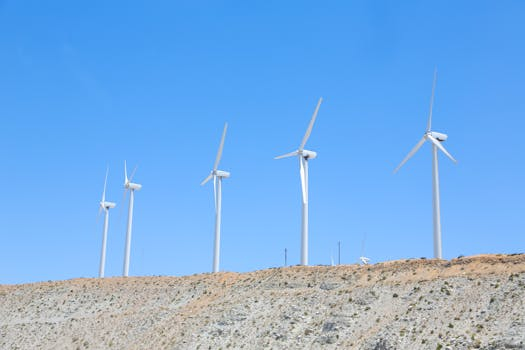Biomimetic Energy Harvesting: Learning from Natural Systems
Biomimetic energy harvesting is an emerging field that takes inspiration from natural systems to develop new technologies for sustainable energy production. By mimicking the energy harvesting strategies of plants and animals, biomimetic systems promise to revolutionize the way we generate and use energy. This approach is attracting a lot of attention from researchers and engineers, as it offers a way to harness renewable energy without relying on conventional methods that harm the environment. In this article, we will explore the concept of biomimetic energy harvesting and how we can learn from natural systems to create a greener future.
The promise of biomimetic energy harvesting
Traditional methods of energy production, such as fossil fuel extraction and nuclear power, are not sustainable in the long term. These methods have severe environmental impacts, including air and water pollution, greenhouse gas emissions, and habitat destruction. They also rely on finite resources, making them vulnerable to depletion and price fluctuations.
In contrast, biomimetic energy harvesting draws inspiration from natural processes that have been perfected over millions of years of evolution. For example, plants use photosynthesis to convert sunlight into chemical energy, while animals use their muscles to convert food into mechanical energy. These natural energy harvesting strategies are highly efficient and sustainable, making them ideal models for developing new technologies.
Learning from photosynthesis
One of the most promising areas of biomimetic energy harvesting is the development of artificial photosynthesis systems. Plants and algae use photosynthesis to convert sunlight, water, and carbon dioxide into energy-rich molecules, such as glucose. Researchers are trying to mimic this process by creating artificial photosynthesis systems that can produce hydrogen or other fuels directly from sunlight and water.
One example of this is the “artificial leaf,” a device that mimics the structure and function of a plant leaf to perform photosynthesis. The artificial leaf contains two electrodes coated with a photocatalyst material, which splits water molecules into hydrogen and oxygen. The hydrogen gas can then be used as a clean fuel source.
Overcoming challenges
While the concept of artificial photosynthesis holds great potential, there are still many challenges to overcome. For example, photocatalysts are currently not as efficient as natural enzymes in plants, and the production processes used in their manufacturing can also have negative environmental impacts. Researchers are also working to develop more stable and cost-effective materials for artificial leafs, to make the technology more practical for commercial use.
Inspiration from animal movement
Another area where biomimetic energy harvesting is making strides is in the development of energy harvesting devices inspired by animal movement. For example, kinetic energy harvesting systems can generate electricity from vibrations, heat, or motion generated by humans, animals, or environmental forces. These systems often take inspiration from the movements of animals, such as the flapping of a bird’s wings or the swimming movements of a fish.
Applications in the real world
Kinetic energy harvesting has many potential applications in the real world. For example, piezoelectric materials, which convert mechanical energy into electricity, could be incorporated into clothing to generate power from the movements of the wearer. This could be particularly useful for hikers, soldiers, or emergency workers in remote areas, who need to stay connected without access to traditional power sources.
Challenges and future outlook
While biomimetic energy harvesting shows great promise, there are still many challenges to overcome before it can become a widespread reality. These challenges include technological barriers, such as improving the efficiency and durability of energy harvesting systems, as well as economic and social barriers, including the costs and impacts of scaling up these technologies for commercial use.
Despite these challenges, biomimetic energy harvesting offers a promising and exciting avenue for sustainable energy production. By learning from nature, we can develop innovative solutions to the pressing energy needs of our planet while minimizing our impact on the environment. With continued research and development, we could see biomimetic energy harvesting playing a crucial role in our transition to a greener future.











